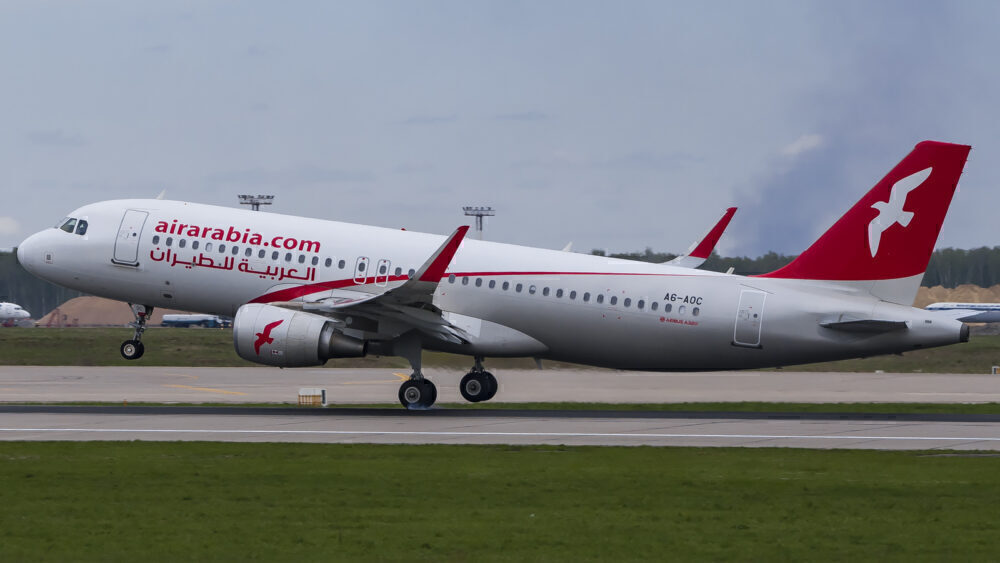Air Arabia has 60 routes from Sharjah this summer, with 26 countries and seven regions to be served. Two countries – India and Saudi Arabia – have four in ten seats, showing how vital they are for the carrier. Yet, Karachi is the number-one route this summer.

The Air Arabia Group comprises four separate units, each with a different air operator’s certificate (AOC). The original, Air Arabia, is still strongly dominant, with over 70% of all of the Group’s 7.1 million seats this summer, distantly followed by Air Arabia Moroc (22%), Air Arabia Abu Dhabi (5%), and Air Arabia Egypt (3%).
Air Arabia has nearly 4.9 million seats from Sharjah this summer, with its network from the UAE airport comprising 60 routes across 26 countries and seven regions. This is down from summer 2019 when it had 76 routes and 33 countries. Earlier this month, Simple Flying showed that the airline’s CEO is positive about summer numbers.

Stay informed: Sign up for our daily and weekly aviation news digests.
South Asia is Air Arabia’s top region
South Asia is Air Arabia’s largest region, beating even the Middle East, with 2.2 million seats and nearly half of its seats (45%) deployed there. 24 destinations make up its South Asia network, with this region’s dominance mainly from India, which is the carrier’s largest country. There is a travel bubble between the UAE and India, helping Air Arabia (and others)circumvent India’s international travel ban.
In contrast, Central Asia is an insignificant region for the carrier from Sharjah, with just two routes: Almaty in Kazakstan and Tashkent in Uzbekistan. Tashkent launched in late 2020 and operates twice-weekly. Another route, Bishkek in Kyrgyzstan, was served before coronavirus hit; it began in July 2017 and is likely to return.

The Middle East is not far behind
As you’d expect, the Middle East is crucial to Air Arabia. Almost 1.7 million Sharjah seats will be to and from the region, involving 20 destinations and eight countries. Saudi Arabia is Air Arabia’s second-largest country after India, with over four times more seats than second-placed Oman. Air Arabia’s Saudi network comprises 12 routes with the 365-mile sector to Dammam top, beating Jeddah and Riyadh.
It is noteworthy that Iran no longer has Air Arabia service. The country has never been a big part of the operator’s network, with just four routes (Tehran, Mashhad, Shiraz, Lar) and only 3% of total capacity in summer 2019, analyzing OAG data reveals. Even Tehran was just four-weekly.
Following the end of the Qatar blockade, Doha has resumed. The route, with a 55-minute block time outbound, is five-weekly in April, rising to once-daily in May. A 21-weekly service was normally offered before the blockade began.

Top-15 routes
The importance of South Asia is clear to see, with nearly half of its top-15 routes to that region across Bangladesh, Nepal, India, and Pakistan. South Asia is strong on a point-to-point basis and, in normal times, for people connecting over Sharjah to/from other Gulf Cooperation Council nations: Bahrain; Kuwait; Oman; Qatar; and Saudi Arabia.

Kuala Lumpur is no more (for now)
At 3,441 miles, Kuala Lumpur was to be by far Air Arabia’s longest route from Sharjah and its only destination in Southeast Asia, but it has been pulled. A321neos were scheduled to operate it. At 2,444 miles, its longest route will now be Sarajevo, followed by Chittagong.
[ad_2]
Source link


